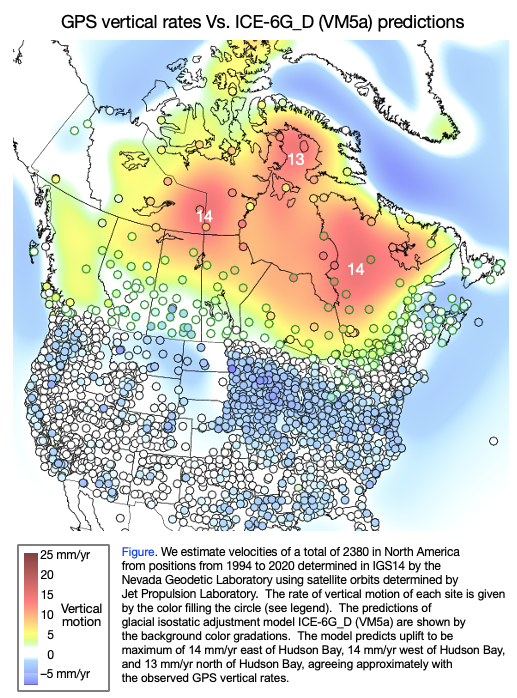Abstract
We distinguish between two models of solid Earth's viscous response to unloading of the Laurentia ice sheet over the past 26,000 years. The upper mantle viscosity in both models is 0.5 x 1021 Pa s. The viscosity of the top 500 km of the lower mantle (670 –1170 km) in model L17 [Lambeck et al. 2017] is 13 x 1021 Pa s, eight times large than the value of 1.6 x 1021 Pa s in ICE-6G_D (VM5a) [Peliter et al. 2015, 2018, Argus et al. 2014]. In ICE-6G_D (VM5a), viscous relaxation of solid Earth was rapid 8,000 years ago and is slow today, with present-day uplift at the Laurentide ice center being 12 mm/yr. In L17, solid Earth relaxed more slowly 8,000 years ago but is faster today, with present uplift 20 mm/yr. The big difference is not due to different ice histories given that total Ice loss in L17 is just 12% less than in ICE-6G_D. We determine a comprehensive set of GPS uplift rates for North America that is more accurate than in prior studies due to (1) more sites and a longer data time history, (2) removal of elastic loading produced by increase in Great Lakes water, and (3) technical advances in GPS positioning that have significantly reduced the dispersion in position estimates. We find uplift at to be about 12 mm/yr, supporting low value of the viscosity of the top 500 km of the lower mantle in ICE-6G_D (VM5a), but ruling out the high value in L17.
